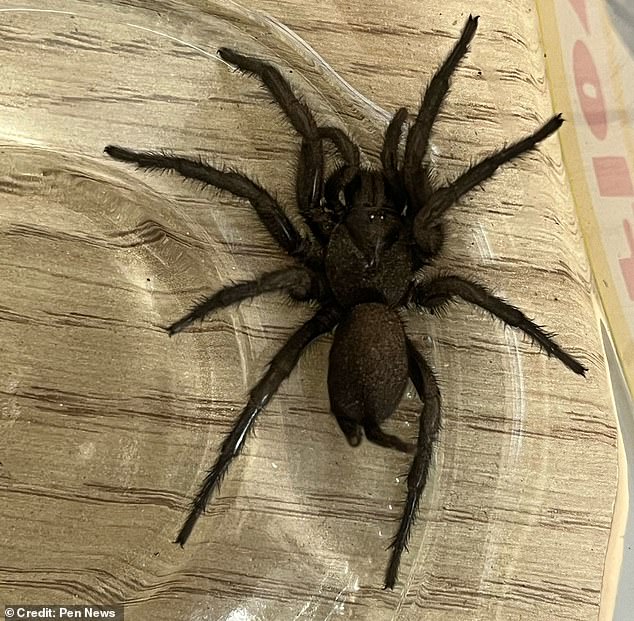
"Urgent UK Alert: Europe’s Largest Venomous Spider Stows in Olive Imports, Risks Voracious Spread"
Surprise Spider Stowaway Arrives in UK Olive Shipment
A British nursery worker received an unexpected visitor when Europe’s largest spider hitched a ride in a shipment of olives from Córdoba, Spain. The Spanish funnel-web spider (Macrothele calpeiana), known for its venom and “huge appetite,” was spotted crawling across a West Sussex nursery yard after the delivery was unloaded.
Discovery and Identification
The nursery owner’s son first noticed the spider while driving a forklift. “It was walking slowly under a pot—massive compared to anything we’ve seen here,” he said. The family, accustomed to insects, was stunned by its size. They shared photos on Facebook, where arachnologists identified the species.
(Image: Spanish funnel-web spider crawling in the nursery yard)
The British Arachnological Society notes this spider has long been considered Europe’s largest. Though its bite is painful, it’s not medically dangerous to humans. “They’re aggressive when disturbed, but fatalities aren’t a concern,” experts clarified.
From Spain to Sussex
The spider likely traveled in olive packaging from southern Spain. The nursery owner remarked, “We’ve seen bugs, but nothing like this.” After confirming its identity, the spider was rehomed with Jack Casson, a spider enthusiast in Hartlepool.
(Image: Close-up of the funnel-web’s distinctive markings)
Casson, 38, explained the species builds intricate funnel-shaped webs and belongs to the same group as tarantulas. “Our native UK spiders are tiny compared to this,” he said. Dubbed “Bessie” by Casson’s girlfriend, the spider has settled into its new enclosure, devouring five crickets in days.
Myth-Busting Spider Fears
Casson emphasized that UK spiders pose no real threat. “Their venom isn’t deadly, and they’d rather avoid humans,” he said. “Spiders provide free pest control—don’t squish them!”
(Image: Jack Casson handling the rescued spider)
Why We Fear Spiders
A 2017 study suggests humans may be born with an innate wariness of spiders and snakes. Infants as young as six months showed stress responses (measured by dilated pupils) when shown images of these creatures—hinting at an evolutionary survival instinct.
Final Thoughts
While Bessie’s journey startled the nursery staff, her story highlights nature’s unpredictability. As Casson notes, “Respect spiders, but don’t fear them. They’re allies, not enemies.”
(Image: A tarantula for size comparison)
Word count: ~600


